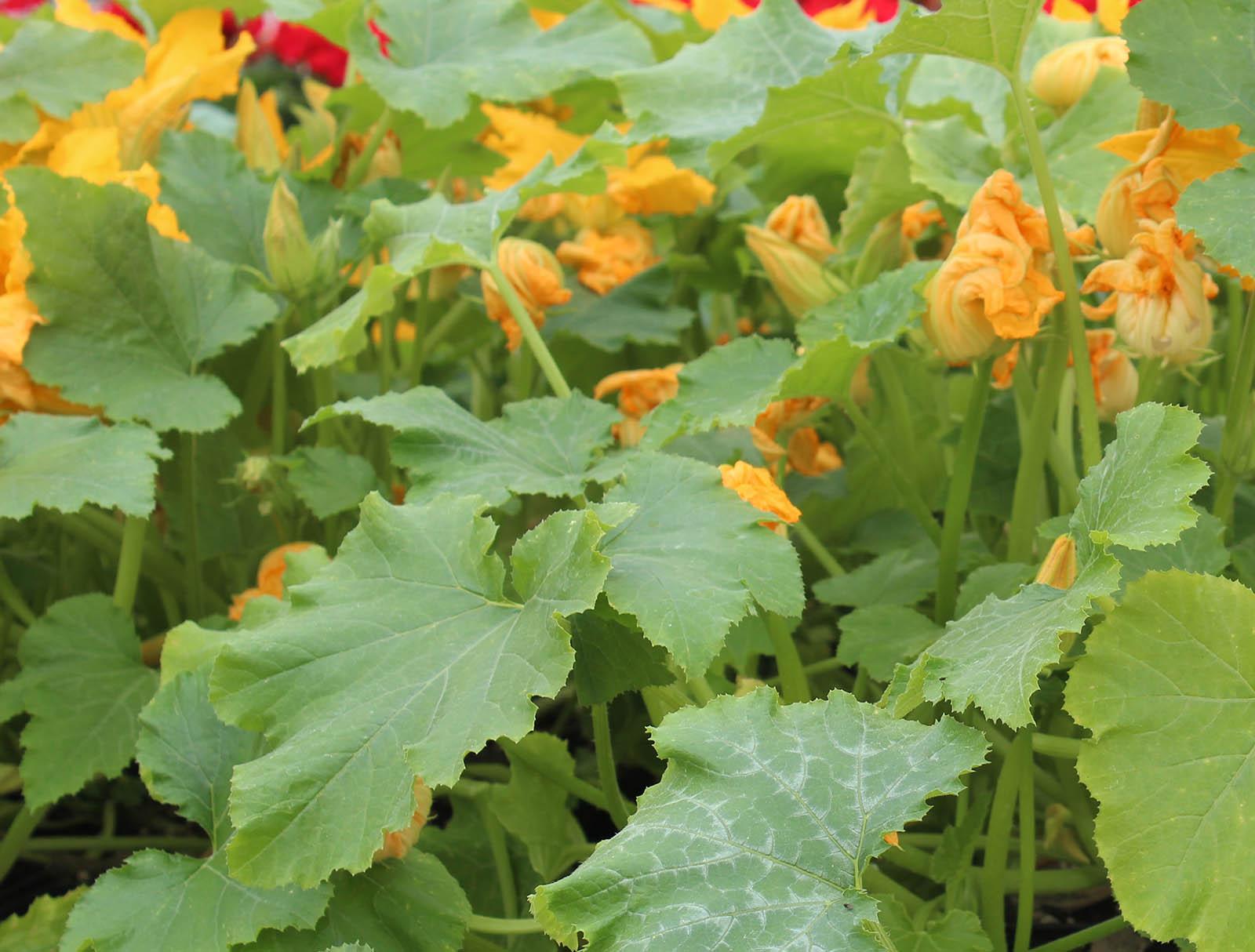
Practices like mulching, using protective netting, and selecting disease-resistant plants is called Integrated Pest Management(IPM) and can help reduce the probability that your garden will suffer from diseases and insects. These problems can result in decreased yield, dead or damaged plants, and inedible fruits and veggies. Planting flowers and herbs in or around your garden can attract pollinators and beneficial bugs that eat some of the bad bugs.
Using IPM means using a variety of proactive steps to pest-proof the garden as well as a combination of appropriate reactive practices to manage pests once the damage is detected on the plants.
Cultural Control is one of the best ways to keep plants pest and disease-free is to discourage pests from causing damage in the garden. These include proper watering (i.e. water at ground level) and fertilizing, removing infested plant material so it doesn’t infect other plants, and choosing pest-and disease-resistant plants. Strong, healthy plants can withstand some insect feeding and will not result in reduced quality or quantity of food harvested.
Mechanical controls involve physically removing or keeping pests off the plants. This includes hand-picking insects and their eggs and putting them in soapy water, pruning out infested/infected plant material, using row covers to create a barrier between pest and host plants, trapping to catch and remove insects from the garden, spraying them with a strong burst of water to dislodge them or using netting and fencing to keep our wildlife like rabbits and birds.
Biological control involves promoting beneficial insects or natural enemies to prevent or control pests in your garden. Some of these include lady beetles, lacewing larvae, syrphid fly larvae, and tiny parasitic wasps. Know how to identify pests and helpful predators and understand that the use of broad-spectrum pesticides not only kill the pests species but also negatively impact the good bugs too.
It is best to inspect plants on a regular basis, at different times of the day and to check under the leaves and stems. Take note of any damage like discoloration, yellow spots, leaf drop, holes in leaves, sticky honeydew, black sooty mold, or frass or droppings. From signs and symptoms, it is possible that someone can help you identify the problem.
- Fertilizers for Vegetables in Home Gardens - G945
- This NebGuide discusses how to manage soil and nutrients when growing vegetables, including soil testing, soil pH, organic matter and the use of commercial fertilizers.
- Garden Compost - G2222
- This NebGuide discusses the advantages of compost, compostable materials, creating and maintaining a compost pile, and uses for compost in the landscape.
- Water Wise Vegetable and Fruit Production - G2189
- Water management guidelines are provided to help growers maximize vegetable and fruit production
